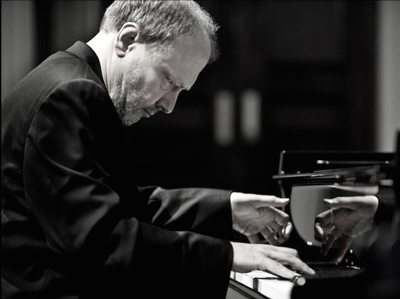by Daniel Hathaway

Haydn’s C-Major Sonata (No. XVI:48 in Anthony von Hoboken’s catalogue) did exactly that at the beginning of the evening. A study in contrasts and surprises, the piece never lets you peek around the corner to see what’s coming next, and Hamelin played it as if he were just as dumbstruck by Haydn’s mood changes as his listeners. Strong filigree, full keyboard runs, and some curious cross-handing all served the composer’s mischievous plan.
Two one-movement early sonatas by Russian composer Samuel Feinberg hide melodies in the inner voices of restless, busy textures. The A-minor piece (Op. 2, No. 2 from 1916) is moodily chromatic, the A-Major Sonata (Op. 1, No. 1 from 1915) wistfully Romantic. Hamelin presented them with admirable clarity, sending the second one off with a strong, dismissive coda.
The pianist’s interpretation of Beethoven’s “Appassionata” Sonata was a revelation. Gentle, then explosive and tightly rhythmic in the first movement, calm and reflective in the second, and astonishingly virtuosic though tightly organized in the third, Hamelin’s playing was underpinned with rhythm as steady as an atomic clock. The intrusive peasant dance in the finale was crazy-fast but perfectly controlled.
After the interval, Hamelin gave a ritualistic performance of Scriabin’s “White Mass” Sonata (No. 7, Op. 64). Often frighteningly intense, sometimes luridly colored, now and then scented with almost cloying fragrances, the pianist’s interpretation was always structured by his hallmark steadiness of pace.
In other hands, Chopin’s B-minor Sonata can seem prolix. Hamelin moved the piece right along but with all its architectural features intact and acknowledged. The funeral march carried a businesslike, inexorable quality, and the final Presto was an ear-intriguing wash of sound, its almost minimalist texture yielding up bits of internal melody as the toccata progressed.
Hamelin still had plenty of energy to reward the audience with an encore. He played Debussy’s Reflets dans l’eau with limpid calm, sitting as motionless at the keyboard for this placid work as he did for such a stormy piece as the Beethoven.
Published on ClevelandClassical.com March 28, 2017.
Click here for a printable copy of this article



